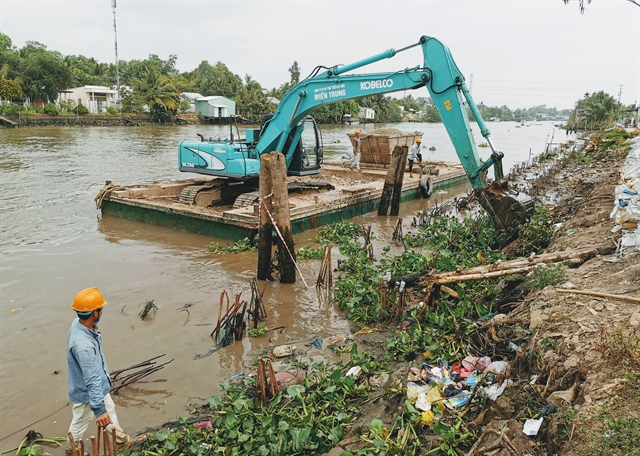 |
|
|
Nguyen Van Hat, whose house is on the bank of the Kien Giang River, in Loc Thuy commune, Le Thuy district of the central province of Quang Binh, still remembers the floods in mid-October 2020.
That day, floodwaters rose to the roof of his house. Hat and his wife were trapped on the roof. For three days, the couple had to eat raw instant noodles to survive, while their children were luckier as they were taken to the house of the commune vice chairman for shelter.
The couple was rescued from the submerged house, but they lost their house and everything else.
Hat's family was one of hundreds of thousands of families in Central Vietnam who suffered heavy damage from floods at that time. And almost every year, people in the central region have to struggle to cope with floods, while natural disasters are becoming more and more unusual.
Heavy damage
 |
According to the General Statistics Office’s data, in October 2020 alone, floods in the central region caused 129 deaths, 214 injured people, 111,200 collapsed or damaged houses; more than 1,000 hectares of rice and 7,200 hectares of crops flooded or damaged. The estimated loss was VND2.3 trillion, accounting for 83.8% of the total damage caused by natural disasters.
The provinces of Quang Tri, Thua Thien - Hue and Quang Binh suffered heavy damage with 106 deaths; 133 injured people; 95,300 houses collapsed and damaged; and hundreds of thousands of cattle and poultry heads died, totaling over VND1.4 trillion in losses.
According to the General Department of Natural Disaster Prevention and Control of the Ministry of Agriculture and Rural Development, natural disasters occurred rapidly and especially fiercely in Vietnam last year.
Specifically, 16 of 22 types of natural disasters occurred, including 14 storms and one tropical depression; 265 thunderstorms; 120 flash floods and landslides; 90 earthquakes…
Natural disasters caused 357 deaths and missing persons; 3,429 collapsed houses, 333,084 damaged houses; over 198,000 hectares of rice and crops damaged; 52,000 cattle heads and 4.1 million poultry killed. The total loss was over VND39,962 billion.
Forcasts for this year say that the number of storms and low pressures in the East Sea, which affect Vietnam, will be equal to the average of many years.
Scientific application for early forecast of natural disasters
 |
|
Minister of Agriculture and Rural Development Le Minh Hoan.
|
Minister of Agriculture and Rural Development Le Minh Hoan has said that we usually gather to fight natural disasters, but when natural disasters are over, we neglect natural disaster prevention. This warning needs to be taken seriously, especially in the context of the Covid-19 epidemic.
There are still concerns about natural disaster prevention and control tasks in Vietnam, including the lack of initiative in reviewing and approving response scenarios before the rainy season. There is a shortage of fundamental and sustainable solutions to adapt to and mitigate consequences of natural disasters.
Vietnam has applied many technologies to inform people about storms, especially via sending texts via phones, which is conducted by the Ministry of Information and Communications.
However, it is a must to speed up the move of people in high-risk areas to safe places.
In addition, due to limitations in science and technology, Vietnam is still incapable of making forecasts of flash floods and landslides, a type of natural disaster that always causes heavy loss of life and property. Therefore, it is necessary to have solutions to improve this task, aiming at not only giving warning, but also defining the specific sites of risks.
In particular, it is necessary to focus on natural disaster prevention and control solutions applied by developed countries such as the US and Japan, which use artificial intelligence (AI) to analyze and forecast rain and floods.
Tran Hai

Natural disaster preparedness should be long-term: minister
Disaster prevention should be a radical, long-term strategy, based on new technology such as forecasting and remote sensing to minimise damage.

VN’s hydro-meteorological sector continues improving capacity, international co-operation in the future
Improving the capacity of hydro-meteorological monitoring and forecasting as well as strengthening international co-operation are identified as two major tasks of the national hydro-meteorological sector in the future.